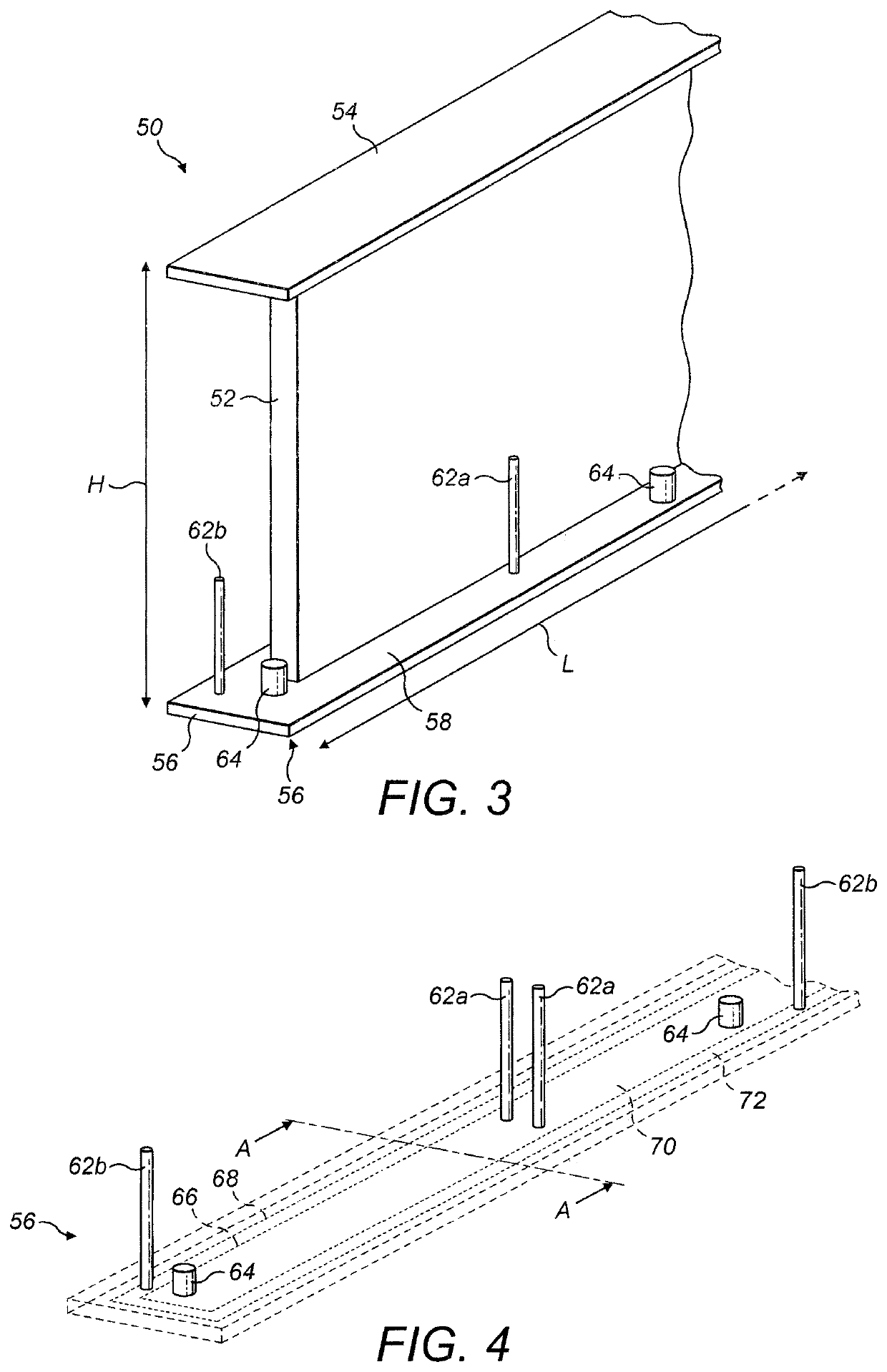Wind turbine blade manufacture
a technology of wind turbine blades and blades, which is applied in the direction of motors, applications, domestic objects, etc., can solve the problems of difficult and time-consuming shear web positioning, and adversely affecting the resulting bondlin
- Summary
- Abstract
- Description
- Claims
- Application Information
AI Technical Summary
Benefits of technology
Problems solved by technology
Method used
Image
Examples
Embodiment Construction
[0050]Referring to FIG. 3, this shows a first end of a longitudinally-extending shear web 50 according to an embodiment of the present invention. The shear web 50 is approximately 80 metres in length (L) and varies in height (H) along its length, with a maximum height at one end of about 4.5 metres. The shear web 50 is substantially I-shaped in cross section and comprises a substantially vertical web 52 disposed between upper and lower mounting flanges 54, 56. The mounting flanges 54, 56 are arranged substantially perpendicular to the web 52 in this example, i.e. substantially horizontal.
[0051]The lower mounting flange 56 comprises an inner surface 58 and an outer surface 60. The terms ‘inner’ and ‘outer’ are relative to a central longitudinal axis of a wind turbine blade in which the shear web 50 is affixed in use (e.g. the central longitudinal axis (C) of the blade 10 in FIG. 1, which extends perpendicular to the page in FIG. 1). The outer surface 60 of the lower mounting flange 5...
PUM
| Property | Measurement | Unit |
|---|---|---|
| height | aaaaa | aaaaa |
| length | aaaaa | aaaaa |
| pressure | aaaaa | aaaaa |
Abstract
Description
Claims
Application Information
 Login to View More
Login to View More - R&D
- Intellectual Property
- Life Sciences
- Materials
- Tech Scout
- Unparalleled Data Quality
- Higher Quality Content
- 60% Fewer Hallucinations
Browse by: Latest US Patents, China's latest patents, Technical Efficacy Thesaurus, Application Domain, Technology Topic, Popular Technical Reports.
© 2025 PatSnap. All rights reserved.Legal|Privacy policy|Modern Slavery Act Transparency Statement|Sitemap|About US| Contact US: help@patsnap.com



